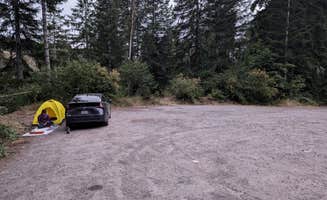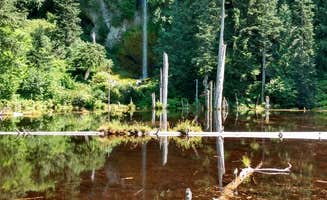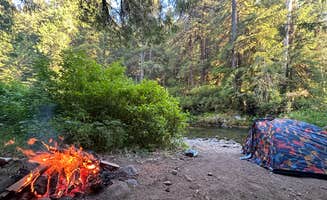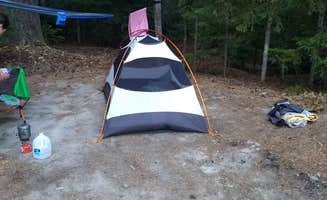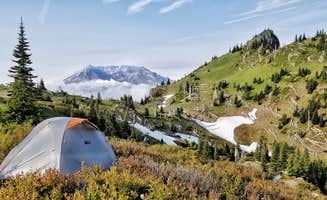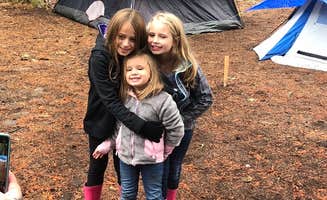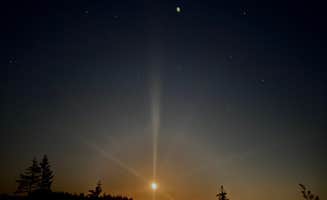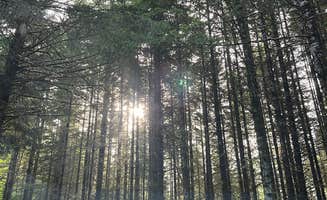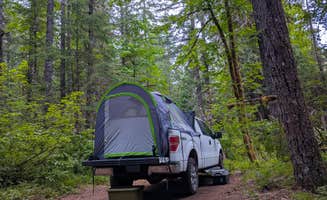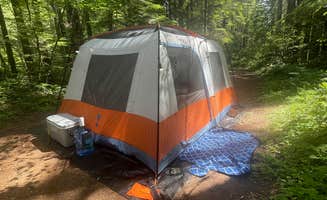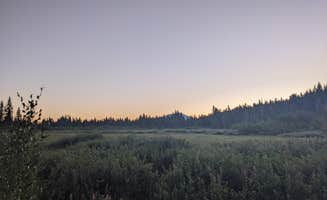Dispersed camping options extend throughout Gifford Pinchot National Forest and surrounding areas near Kelso, Washington. These rustic sites range in elevation from 1,500 to 4,000 feet, with terrain varying from riverside clearings to mountain viewpoints. Summer temperatures typically reach 75-85°F during daytime hours, cooling to 45-55°F at night, while spring and fall camping often sees temperature swings of 30-40 degrees between day and night.
What to do
Waterfall hikes: 15-minute walk from Beaver Falls Trailhead to a swimming spot popular during summer months. The trail is accessible from a large pull-out parking area. "Beautiful waterfall after a short hike. Great for an evening dip," notes Ryan D., who cautions that law enforcement patrols the area due to occasional criminal activity.
Mountain biking: Forest Service roads around Little Soda Springs Rd Dispersed provide access to numerous trail systems. "The area is peaceful with a nice mix of forest and open space—felt super remote with hardly anyone else around. We found a great shady spot not far from a small creek," writes Johny B., who recommends downloading trail maps before arrival due to no cell service.
Mushroom foraging: August-September seasons near Butte Camp/Climbers Bivouac Dispersed Campsite offer productive hunting grounds. "The forest has majestic trees and when it rains, it resembles a rainforest. During August and September, you can find tons of edible mushrooms," according to camper Starseed P.
What campers like
Riverside camping spots: Several Gifford Pinchot National Forest-Canyon Creek Dispersed Camping sites feature direct access to water. Jeffrey P. mentioned, "Once we found a spot right near the riverbank, you felt like you were deep in it... Really relaxing next to the sound of the river."
Privacy between sites: Secluded camping at dispersed areas allows for solitude. "Spaces were far enough apart that you couldn't even tell anyone else was out there," notes Jeffrey P. about Canyon Creek, while another camper, Ethan H., chose this spot specifically for "small crowds" with "no neighbors in the nearby sites."
Off-season accessibility: Spring and fall camping provides increased solitude. According to Autumn B. about Mount St. Helens Dispersed Camping, "We didn't see anyone for miles in late April," despite encountering snow at higher elevations. She adds, "A friend and I drove around for a campsite for hours because our original one was under 2 feet of snow."
What you should know
Road conditions vary drastically: Access routes require appropriate vehicles and preparation. At Road to Snag Lake - Dispersed, Ryan S. notes, "The road getting here is a bit rough with lots of washboard, steep grades and rocks. But it's fun." Anna P. adds it's "a decently maintained but long and steep gravel road, doable in a Prius but she was panting by the end."
Navigation challenges: GPS coordinates may be unreliable. "The coordinates here were incorrect coming from Hood River Oregon. It sent me down a rough dead end forest service road. I ended up lost on the mountain for 3 hours," warns Vanessa T. about Canyon Creek access.
Limited facilities: Most dispersed camping sites have no amenities. Brendan at Tillamook State Forest Dispersed Camping observes simply, "Dry camping. Please clean up after yourselves," reflecting the pack-in, pack-out requirement at most locations.
Tips for camping with families
Choose sites with swimming access: Tillamook State Forest Dispersed Camping offers creek-adjacent sites for summer heat relief. Casey B. says, "For being about an hour outside of Portland, this place is magical. If you're into disbursed camping, you have to give this place a visit."
Assess noise levels: Some areas experience unexpected traffic. Amy & Stu B. report, "OHV vehicles are incredibly loud and ran throughout the weekend— but I have a feeling it's very quiet on the week days."
Plan for variable weather: Temperature swings of 30-40°F between day and night are common. Seth M. recommends, "AWD is nice but isn't necessary if the road is fairly dry," suggesting weather impacts road conditions significantly.
Tips from RVers
Length restrictions: Most dispersed sites accommodate only smaller trailers and RVs. Kevin W. describes McBride Lake NF-81 Dispersed as "trailer friendly" but adds, "Due to the narrow road, it may be a bit more snug with bigger rigs (25+ feet long and anything more than 8+ feet wide). I would scout the road and area before committing."
Solar considerations: Tree cover affects power generation. Kevin notes McBride Lake offers "a lot of shade, and it is not solar-friendly," while Tillamook sites typically have better sun exposure.
Turnaround space: Limited maneuvering areas dictate suitable RV size. "There is a turnaround that you could use to maneuver the trailer to drive out. It's plenty big to accommodate a few trucks/cars and one, maybe two towable trailers," explains Kevin regarding McBride Lake sites.


